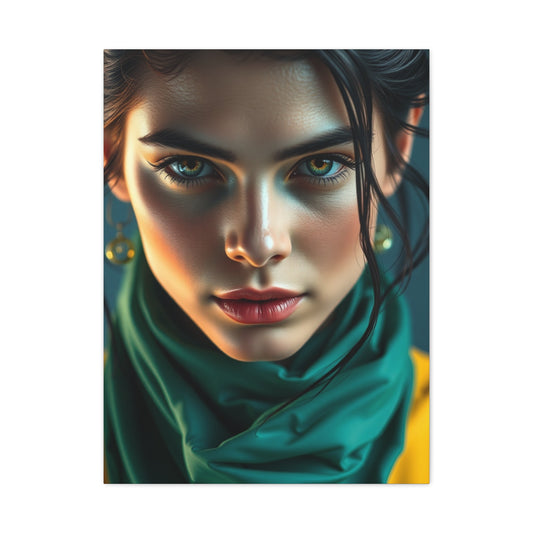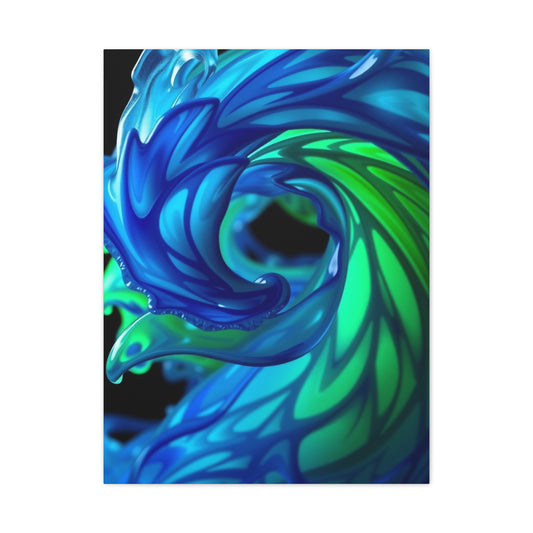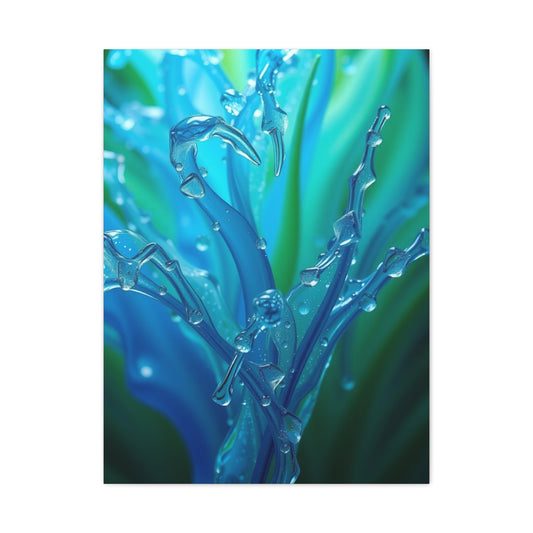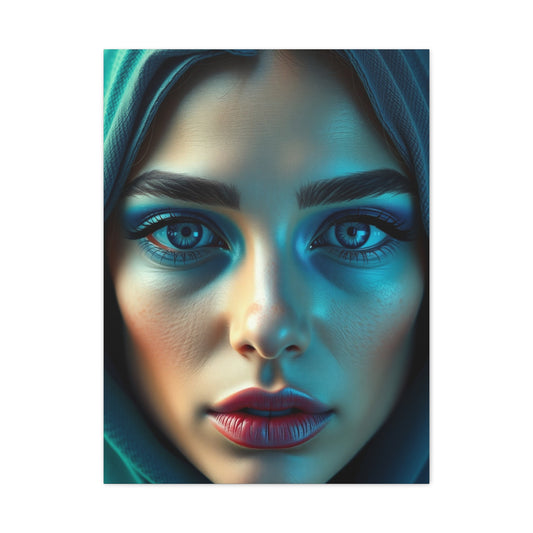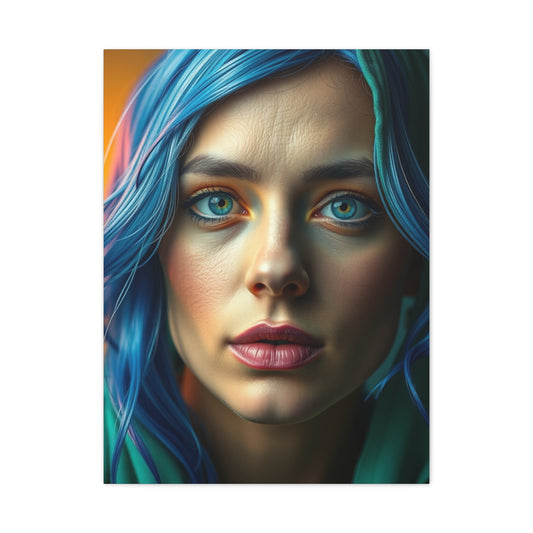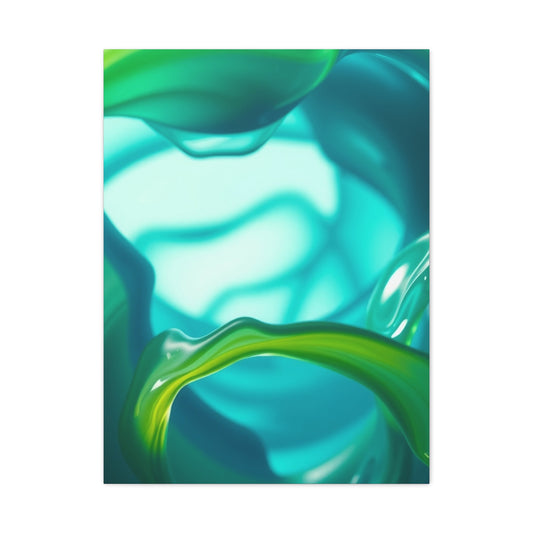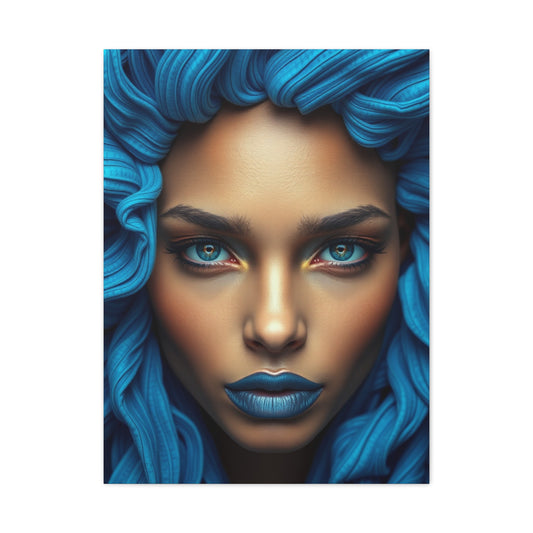Blue and Green Wall Art: Enchanting Allure in Home Interiors
Creating captivating home interiors often involves more than just furniture and lighting. The strategic use of color, particularly in wall art, can redefine spatial perception and elevate the ambiance of any room. Among the most enchanting combinations in interior design are blue and green hues, which evoke a sense of serenity, sophistication, and organic balance. These colors, when incorporated thoughtfully through wall art, provide homeowners with a unique opportunity to connect with nature while enhancing the psychological and aesthetic quality of their living spaces.
Blue and green wall art appeals not only through visual beauty but also through its intrinsic connection to the natural world. Drawing inspiration from sky, ocean, and verdant landscapes, these colors embody a timeless elegance that complements diverse architectural styles. From deep sapphire to soft mint and forest to celadon, the spectrum of blues and greens offers endless possibilities for creating immersive environments that feel simultaneously calming and invigorating.
Modern design trends increasingly prioritize biophilic principles, acknowledging humanity’s innate affinity for nature. Wall art in blue and green tones bridges indoor and outdoor environments, transforming ordinary walls into visual experiences that nurture emotional well-being. By emulating natural vistas, such as tropical forests, ocean horizons, and leafy gardens, this type of artwork can induce relaxation, enhance mood, and even boost creativity and productivity.
The Psychological Influence of Blue and Green Hues
Color psychology plays a vital role in the selection of wall art. Research demonstrates that specific shades can have profound effects on human emotions, cognitive performance, and stress levels. Blues are traditionally associated with calmness, stability, and clarity, while greens symbolize growth, balance, and renewal. When combined in wall art, these colors create environments conducive to mindfulness, creativity, and emotional equilibrium.
Sapphire and teal tones evoke associations with tranquil waters and expansive skies, triggering neurological responses that reduce cortisol production and activate the parasympathetic nervous system. This biological response helps individuals feel centered and composed. Green tones, such as jade and moss, connect to imagery of thriving forests and lush landscapes, stimulating serotonin release and promoting optimism. The interplay of these colors amplifies their individual benefits, offering synergistic advantages for interior spaces.
Integrating blue and green wall art in bedrooms, living areas, or home offices can foster relaxation and mental clarity. Teal, mint, and celadon shades are particularly effective for spaces dedicated to creative pursuits, meditation, or personal rejuvenation. The subtle harmony between these hues enhances concentration and emotional resilience while providing a visually captivating environment.
Historical Roots of Blue and Green in Art
Throughout history, blue and green pigments have held significant cultural and symbolic value. In ancient civilizations, deep blue minerals like lapis lazuli were prized for their rarity and beauty, often reserved for religious or royal decorations. These pigments were used to create murals, illuminated manuscripts, and ceremonial artifacts that conveyed divine authority, wisdom, and timeless elegance. Similarly, verdant tones have been associated with fertility, abundance, and harmony across different cultures.
During the Renaissance, artists perfected the application of ultramarine and verdigris in frescoes, enabling subtle gradations and luminous effects. In later periods, movements such as Arts and Crafts emphasized natural motifs, incorporating periwinkle, teal, and sage into intricate wallpaper designs and decorative arts. The enduring appeal of these colors in interior decoration demonstrates their ability to evoke beauty, balance, and connection with the natural world.
Incorporating Blue and Green Wall Art in Modern Interiors
Contemporary interior design increasingly emphasizes holistic living spaces that harmonize aesthetics, functionality, and emotional well-being. Blue and green wall art serves multiple purposes beyond decoration. These pieces can define spatial zones, enhance lighting dynamics, and create focal points that anchor the overall design scheme.
In living rooms, large-scale artworks featuring cerulean or emerald tones can create dramatic visual anchors, complementing furniture and architectural features. Bedrooms benefit from softer shades such as powder blue or mint, promoting restful sleep and relaxation. Home offices can utilize teal and sage art to enhance focus and stimulate creativity, while bathrooms and wellness areas flourish under aquamarine and jade themes that evoke freshness and renewal.
Biophilic design principles highlight the importance of connecting interiors to nature. Incorporating naturalistic elements through blue and green artwork—such as botanical motifs, oceanic landscapes, or abstract representations of forests—can improve mood, reduce stress, and enhance cognitive performance. By mimicking natural patterns and colors, homeowners can create immersive spaces that provide both psychological and visual benefits.
Mastering Color Harmony in Blue and Green Artwork
The successful integration of blue and green wall art requires knowledge of color theory, spatial perception, and lighting. Complementary color relationships allow designers to introduce accent tones that energize spaces without overwhelming the eye. For example, pairing cornflower blue with lime green creates dynamic contrast while maintaining visual cohesion. Analogous schemes, such as pairing teal with sage, produce seamless transitions that guide the eye naturally through interconnected spaces.
Triadic color arrangements introduce additional layers of interest, balancing primary blue and green hues with strategic accent shades to create vibrant, harmonious interiors. Understanding color temperature is equally important; cool blues and greens can make rooms feel larger and more open, whereas warmer undertones create cozy, intimate atmospheres. Strategic placement of wall art ensures these effects are maximized while enhancing the functionality and aesthetic appeal of each space.
Artistic Mediums and Material Innovation
Blue and green wall art is available in diverse mediums, each offering unique advantages. Canvas paintings provide texture and depth, allowing for intricate brushwork and color layering. Glass and acrylic artworks exploit light transmission and reflection, producing dynamic visual effects that change throughout the day. Metal sculptures and wall panels offer three-dimensionality, while mixed-media installations combine multiple materials to achieve innovative, eye-catching compositions.
Fabric-based art enhances acoustic comfort and softness, ideal for bedrooms or meditation rooms. Wood, ceramic, and other natural substrates complement earthy blue and green hues, reinforcing biophilic design principles. High-quality finishes, protective coatings, and advanced printing techniques ensure long-lasting vibrancy and durability, even in spaces exposed to sunlight or moisture.
Thematic Approaches to Blue and Green Art
Contemporary interiors benefit from thematic coherence in wall art selection. Abstract pieces explore color, form, and texture, providing intellectual stimulation while complementing modern decor. Botanical artwork incorporates natural motifs, bridging indoor spaces with the outdoors and supporting biophilic design. Minimalist interpretations focus on essential forms, emphasizing calmness and clarity without visual clutter. Coastal and maritime themes harness oceanic inspirations, creating serene, evocative spaces. Geometric patterns introduce structure and rhythm, appealing to those who value visual precision and order.
Room-Specific Applications
In living areas, blue and green art can serve as statement pieces or gallery walls, enhancing conversation areas and reinforcing design narratives. Bedrooms benefit from calming shades that support restful sleep, while home offices thrive under colors that promote focus and creativity. Bathrooms and wellness areas flourish with oceanic or botanical tones that evoke renewal. Hallways and transitional spaces gain visual interest through vertical compositions or small-scale series, providing continuity and aesthetic cohesion throughout the home.
Material Selection and Artistic Medium Considerations
The choice of artistic medium significantly impacts how midnight blue and jade colors appear in residential settings. Different materials interact with light in unique ways, creating variations in saturation, luminosity, and visual texture that can dramatically alter a room's atmosphere. Understanding these material properties is essential for making informed decorating decisions.
Canvas paintings offer traditional appeal with proven longevity, allowing artists to achieve rich color depths through layered application techniques. Oil-based mediums provide particular advantages for ocean blue and spring green subjects, enabling subtle transitions and luminous effects that capture the essence of natural inspiration. The slight texture of canvas adds visual interest while diffusing light in ways that enhance color richness.
Photographic prints on various substrates provide contemporary alternatives with exceptional color accuracy and detail reproduction. Modern printing technologies can achieve remarkable fidelity when reproducing prussian blue and lime artworks, while specialized papers and inks ensure fade resistance and archival quality. The smooth surfaces of photographic prints create different lighting interactions compared to textured alternatives.
Metal prints have gained popularity for their ability to create luminous effects with cobalt and mint subjects. The reflective properties of aluminum substrates enhance color vibrancy while providing exceptional durability and moisture resistance. These characteristics make metal prints particularly suitable for humid environments like bathrooms or kitchens where traditional materials might deteriorate.
Acrylic panels offer modern sophistication with superior color saturation and light transmission properties. When backlit, translucent acrylic artwork featuring cerulean and sage designs creates stunning effects that transform ordinary walls into luminous installations. The non-porous nature of acrylic provides easy maintenance while ensuring long-term color stability.
Digital art printed on specialized fabrics opens possibilities for unique textural effects with steel blue and seafoam subjects. These materials can be stretched over frames like traditional canvases while offering superior wrinkle resistance and color retention. The slight translucency of many fabric substrates creates subtle depth effects that enhance the organic nature of nature-inspired artwork.
Strategic Placement for Maximum Visual Impact
The positioning of turquoise and moss wall decorations within interior spaces requires careful consideration of multiple factors including natural light exposure, viewing angles, and interaction with existing architectural features. Professional placement techniques can significantly enhance the effectiveness of these artistic investments while ensuring long-term satisfaction with decorative choices.
Natural light sources profoundly influence how navy and olive artwork appears throughout daily cycles. Morning sunlight tends to emphasize cooler undertones, making azure elements appear more vibrant while subduing warmer green components. Afternoon light reverses this effect, warming jade tones while cooling blue elements. Understanding these temporal variations allows for strategic placement that optimizes appearance during preferred viewing times.
Artificial lighting systems offer opportunities to control and enhance the presentation of periwinkle and lime wall art. LED systems with adjustable color temperatures can be programmed to complement specific artworks throughout different periods, creating dynamic environments that evolve with daily routines. Proper lighting angles minimize glare while maximizing color saturation and visual clarity.
The relationship between artwork size and wall proportions significantly affects visual impact and spatial harmony. Oversized powder blue and mint pieces can dominate smaller rooms while creating dramatic focal points in expansive spaces. Conversely, smaller artworks may appear lost on large walls unless grouped strategically or positioned within architectural frames like alcoves or built-in shelving systems.
Height placement follows established principles while allowing for creative interpretation based on specific circumstances. The traditional guideline of positioning artwork at eye level provides reliable starting points, but variations may be necessary to accommodate furniture, architectural features, or viewing preferences. Consideration of seated versus standing viewing positions influences optimal placement heights.
Adjacent elements including furniture, window treatments, and decorative accessories must be evaluated for their interaction with cornflower and emerald wall art. Colors, textures, and forms should complement rather than compete with artistic focal points. This holistic approach ensures that individual elements contribute to cohesive overall design schemes.
Creating Cohesive Color Palettes Through Strategic Integration
The development of comprehensive interior color schemes incorporating midnight blue and sage artwork requires systematic approaches that consider both immediate visual impact and long-term livability. Professional designers employ proven methodologies to ensure that bold color choices enhance rather than overwhelm residential environments while maintaining flexibility for future modifications.
Monochromatic schemes built around various shades of teal and forest tones offer sophisticated approaches to color integration. By selecting artwork, furnishings, and accessories within narrow color ranges, designers can create environments with remarkable depth and visual interest without relying on contrasting hues. This approach works particularly well in spaces where tranquility and cohesion are primary objectives.
Complementary palettes introduce dynamic tension through strategic use of colors opposite each other on the color wheel. Ocean blue artwork paired with warm orange accents creates vibrant compositions that energize spaces while maintaining visual balance. The key to success with complementary schemes lies in controlling the proportions of each color to prevent overwhelming effects.
Split-complementary arrangements offer more nuanced approaches to color harmony by utilizing colors adjacent to direct complements. This technique allows for incorporation of royal blue and mint artwork while introducing subtle warm accents that add visual interest without creating stark contrasts. The result is sophisticated color relationships that feel both harmonious and dynamic.
Analogous color schemes utilize adjacent colors on the color wheel to create flowing, harmonious environments. Aquamarine and chartreuse artwork can be seamlessly integrated with neighboring hues like violet or yellow-green to create spaces that feel naturally coordinated. This approach mimics color relationships commonly found in natural environments.
Triadic color relationships introduce complexity through the use of three colors equally spaced around the color wheel. When properly balanced, these schemes can accommodate cerulean and olive artwork while providing opportunities for accent colors that add vibrancy and visual interest. Success requires careful attention to color proportions and saturation levels.
Seasonal Adaptation and Temporal Design Flexibility
One of the most compelling aspects of incorporating prussian blue and lime wall decorations into residential design lies in their remarkable adaptability to seasonal changes and evolving preferences. Unlike more restrictive color schemes, this versatile combination provides foundations that can be refreshed and modified without requiring complete redecoration projects.
Spring transformations can emphasize the verdant aspects of green artwork while introducing fresh accents through textiles, flowers, and decorative accessories. Light, airy fabrics in complementary colors can be layered over existing furnishings to create seasonal freshness while allowing permanent artistic investments to remain constant. This approach maximizes decorating flexibility while minimizing costs.
Summer modifications might focus on the cooling aspects of cobalt and seafoam elements, utilizing white and silver accents to create refreshing environments during warmer months. Lightweight window treatments can be substituted to increase natural light while lightweight decorative elements can be introduced to enhance the breezy, coastal feeling these colors naturally evoke.
Autumn adaptations can warm up teal and moss artwork through the introduction of golden, bronze, and copper accents that complement without competing. Textured fabrics, warm lighting, and natural materials like wood and stone can be emphasized to create cozy environments that maintain the tranquil foundation established by the primary color scheme.
Winter transformations might incorporate deeper, richer tones to create intimate, cocoon-like atmospheres. Velvet textures, metallic accents, and dramatic lighting can transform the same indigo and sage artwork into sophisticated, jewel-like focal points that provide comfort during shorter days and longer nights.
The investment value of quality periwinkle and mint wall art extends beyond immediate aesthetic gratification to include long-term adaptability and timeless appeal. Unlike trendy colors that quickly become dated, these nature-inspired hues maintain their relevance across changing design movements while providing foundations for creative seasonal modifications.
Advanced Design Integration Techniques for Modern Homes
Contemporary residential architecture presents unique opportunities and challenges for incorporating teal and moss wall decorations effectively. Open-concept layouts, large windows, and minimalist aesthetic preferences require sophisticated approaches that maximize impact while maintaining visual coherence across multiple functional areas.
Zoning techniques utilize color to define functional areas within open spaces while maintaining visual flow between zones. Ocean blue artwork might anchor living areas while sage pieces define dining spaces, creating subtle transitions that guide movement and usage patterns. This approach maintains the benefits of open design while providing psychological boundaries that enhance functionality.
Architectural integration involves coordinating navy and lime artwork with existing structural elements like exposed beams, built-in shelving, and fireplace surrounds. By selecting pieces that complement rather than compete with architectural features, designers create cohesive environments that feel intentionally planned rather than accidentally assembled.
Scale manipulation techniques ensure that royal blue and mint wall decorations maintain appropriate proportions within contemporary spaces that often feature soaring ceilings and expansive wall surfaces. Oversized pieces or grouped arrangements can fill large walls effectively while maintaining visual weight that balances other architectural elements.
Lighting integration strategies maximize the impact of periwinkle and olive artwork through coordinated illumination systems. Track lighting, picture lights, and accent fixtures can be positioned to enhance color saturation and create dramatic effects during evening hours. Smart lighting systems allow for programmed scenarios that adapt throughout daily cycles.
Technology integration considerations include planning for wall-mounted televisions, audio systems, and smart home controls that might affect artwork placement. Modern homes increasingly incorporate technology elements that must be balanced with decorative components to maintain aesthetic harmony. Strategic planning ensures that functional requirements don't compromise artistic impact.
Material Innovation and Sustainable Art Options
Environmental consciousness increasingly influences decorating decisions, with homeowners seeking aquamarine and forest artwork options that align with sustainability values. Innovative materials and production methods offer choices that minimize environmental impact while maintaining exceptional quality and visual appeal.
Recycled materials provide foundations for unique prussian blue and seafoam artistic creations that carry additional meaning through their environmental benefits. Reclaimed wood, recycled metals, and repurposed textiles can be transformed into stunning wall decorations that tell stories of renewal and environmental stewardship while providing distinctive aesthetic qualities.
Sustainable production methods including water-based inks, non-toxic solvents, and renewable energy utilization ensure that cerulean and jade artwork creation doesn't compromise environmental values. Many contemporary artists prioritize these methods, offering consumers opportunities to support both artistic expression and environmental responsibility simultaneously.
Local artisan support provides additional sustainability benefits by reducing transportation requirements while supporting community economies. Regional artists often draw inspiration from local landscapes, creating teal and moss pieces that reflect specific geographic characteristics while minimizing carbon footprints associated with long-distance shipping.
Longevity considerations ensure that investment in indigo and mint wall decorations provides lasting value through superior materials and construction methods. Quality pieces that resist fading, moisture damage, and mechanical wear reduce the need for frequent replacement while maintaining aesthetic appeal over decades of use.
Digital art options eliminate many traditional production environmental impacts while offering unprecedented customization possibilities. High-resolution printing technologies can reproduce cornflower and lime designs with exceptional fidelity while allowing for easy modification and reproduction when spaces or preferences change.
Professional Installation and Maintenance Considerations
Proper installation of powder blue and sage wall artwork ensures optimal presentation while protecting valuable investments from damage due to environmental factors, structural settling, and normal wear. Professional techniques maximize both immediate visual impact and long-term preservation of artistic elements.
Wall preparation involves assessing surface conditions, moisture levels, and structural stability before mounting significant artistic pieces. Properly prepared surfaces ensure secure mounting while preventing damage from humidity, temperature fluctuations, and minor structural movement. This preparation is particularly important for heavy pieces or valuable originals.
Mounting systems vary based on artwork type, weight, and wall construction. Traditional picture hanging systems work well for lighter pieces, while heavy installations may require specialized brackets, French cleat systems, or professional mounting hardware. Security considerations include preventing theft while allowing for seasonal adjustments or relocation.
Environmental controls help preserve midnight blue and olive artwork by maintaining stable temperature and humidity levels while protecting from direct sunlight and airborne contaminants. UV-filtering window treatments, climate control systems, and air purification can significantly extend the lifespan of artistic investments.
Maintenance schedules ensure that steel blue and chartreuse wall decorations continue to provide optimal visual impact throughout their useful lives. Regular dusting, professional cleaning when necessary, and periodic inspection for signs of deterioration allow for preventive care that maintains appearance while identifying potential problems before they become serious.
Insurance considerations protect financial investments in significant artistic pieces while providing peace of mind for homeowners. Proper documentation, professional appraisals, and appropriate coverage levels ensure that aquamarine and moss artwork investments are protected against various risks including theft, damage, and natural disasters.
Future Trends and Emerging Technologies
The landscape of residential wall decoration continues to evolve through technological advancement, changing lifestyle preferences, and emerging artistic movements. Understanding future directions helps homeowners make investment decisions that will remain relevant and valuable as design preferences continue to develop.
Interactive artwork incorporating turquoise and jade elements represents emerging possibilities that combine traditional aesthetic appeal with modern technology integration. Digital displays capable of showing various compositions, color variations, and even motion effects provide unprecedented customization while maintaining the calming benefits associated with these natural hues.
Augmented reality applications allow homeowners to preview navy and lime wall decorations in their specific spaces before making purchase decisions. These technologies eliminate guesswork while providing opportunities to experiment with different sizes, positions, and compositions without physical installation requirements.
Smart integration capabilities enable royal blue and mint artwork to respond to environmental conditions, personal schedules, and mood preferences. Programmable lighting systems, color-changing displays, and automated positioning systems represent emerging possibilities that enhance the therapeutic and aesthetic benefits of artistic installations.
Customization technologies including large-format printing, laser cutting, and 3D fabrication democratize access to unique periwinkle and olive artistic pieces. Homeowners can commission custom works, modify existing designs, or create entirely original compositions that reflect personal preferences while maintaining professional quality.
Sustainability innovations continue to reduce the environmental impact of ocean blue and sage artwork production while improving quality and longevity. Bio-based materials, renewable energy production, and circular economy principles increasingly influence artistic creation and distribution methods.
The Timeless Allure of Nature's Palette: Cerulean, Emerald, and More
Humanity’s profound connection to nature has long been reflected in the colors that dominate our surroundings. Among the most enduring and universally beloved hues are cerulean, emerald, and other natural tones that evoke memories of pristine skies, lush forests, and deep waters. These colors transcend fleeting design trends, offering timeless appeal that enhances both immediate living experiences and long-term property values. As we continue to embrace the tranquility and beauty found in the natural world, incorporating these shades into our homes has become more than a design choice—it is an investment in both aesthetics and well-being.
The use of colors like cerulean, emerald, prussian blue, and chartreuse in wall decorations and artwork represents more than just decoration. These hues are inherently connected to our physical, mental, and emotional states. Scientific research supports the therapeutic benefits of colors found in nature, offering compelling reasons to incorporate these tones into residential spaces where we spend a significant portion of our time. The psychological and emotional responses we have to these colors create environments that nurture well-being and support a sense of harmony.
In this article, we will explore the enduring popularity of nature-inspired color schemes, the benefits of incorporating them into your living space, and the exciting future possibilities for these timeless hues in interior design.
The Power of Nature-Inspired Colors
Nature’s colors are universally appealing due to their ability to evoke calmness, stability, and a sense of balance. Whether it's the soothing cerulean blue of the sky, the vibrant emerald green of a forest, or the deep prussian blue of the ocean, these shades provide a sensory experience that enhances the mood and atmosphere of any room.
Cerulean, often associated with clear skies and tranquil waters, has long been a favorite among interior designers. This gentle yet vibrant shade offers a sense of spaciousness and serenity, making it an ideal choice for bedrooms, living rooms, or even bathrooms. Its cool tones evoke a feeling of openness and clarity, while also offering a sophisticated and calming backdrop to other design elements.
Emerald green, a hue found in abundance in nature, has also become a staple in home decor. It represents renewal, growth, and vitality, all of which are crucial components of a healthy living environment. Emerald is deeply associated with the natural world, particularly lush forests and fertile landscapes. Its ability to bring a sense of rejuvenation and balance into a space makes it an excellent choice for creating a peaceful and restorative atmosphere in any home.
Alongside these two timeless favorites, shades such as aquamarine, chartreuse, teal, and olive provide exciting opportunities for creating unique and harmonious color palettes. These hues are adaptable and can be used to evoke a variety of moods, from refreshing and energizing to soothing and calming. When paired thoughtfully, these colors can create a balanced and cohesive environment that speaks to both the eye and the soul.
Cerulean, Emerald, and Prussian Blue: A Tribute to the Elements
The colors cerulean, emerald, and prussian blue are often used to evoke the elements of water and earth. These shades are inspired by the natural world, where the sky, oceans, and forests dominate the landscape. When incorporated into home decor, they bring the beauty of nature indoors, helping to create spaces that are both serene and energizing.
Prussian blue, a deep and rich shade of blue, is often associated with the depths of the ocean and the vastness of the sky. It is a color that signifies strength, stability, and depth, making it an excellent choice for creating a sophisticated, timeless atmosphere in a room. Whether used as an accent color or as the primary hue in a design scheme, prussian blue adds an air of elegance and refinement to any space.
Chartreuse, a bold and energetic yellow-green shade, provides a dynamic contrast to the more serene blues and greens. This color represents growth, creativity, and energy, and is often used to inject vibrancy into a space. When combined with cerulean or emerald, chartreuse can add a lively pop of color, while still maintaining an overall sense of harmony and balance.
The Psychological Benefits of Nature-Inspired Colors
Colors are not just visually appealing; they have a profound impact on our psychological and emotional states. Research in color psychology shows that certain hues can influence our moods, behaviors, and even our physiological responses. Nature-inspired colors like cerulean and emerald are particularly effective in creating spaces that promote relaxation, focus, and well-being.
The calming effects of cerulean are well-documented, with studies showing that the color’s blue tones can reduce stress and anxiety. Blue is often associated with tranquility and peace, making it an ideal choice for spaces where relaxation is key, such as bedrooms or meditation areas. The use of cerulean in home decor can also promote creativity and mental clarity, helping to foster a calm, focused environment.
Emerald green, with its strong association with nature and growth, is another color that has been shown to have a positive effect on emotional well-being. Green is known to promote relaxation, reduce stress, and enhance concentration. This makes emerald an excellent choice for spaces that require both focus and a sense of calm, such as home offices or study areas. Additionally, green’s connection to the natural world provides a grounding, restorative effect that promotes overall emotional balance.
Prussian blue, with its deep, rich tones, has been shown to evoke feelings of strength and stability. This color is often used to create a sense of sophistication and elegance in a room, but it also has a calming effect on the mind. The deep blue of prussian blue can help to create a peaceful environment that supports mental clarity and emotional resilience.
Chartreuse, while a more vibrant and energetic hue, also carries psychological benefits. This color is known to stimulate creativity, improve energy levels, and inspire optimism. In spaces where productivity and motivation are key, chartreuse can help to foster an environment that is both invigorating and uplifting.
The Versatility and Adaptability of Nature-Inspired Color Palettes
One of the key reasons that cerulean, emerald, and other nature-inspired colors have remained popular in home decor is their versatility. These colors can be used in a wide variety of design styles, from modern minimalism to traditional elegance, and they can easily adapt to changing tastes and trends.
The timeless appeal of these hues ensures that they will remain relevant and adaptable as personal preferences, life circumstances, and design trends evolve. As the years go by, the beauty of cerulean, emerald, and prussian blue will continue to be appreciated for their ability to bring the outdoors in and create spaces that reflect the natural world. Their inherent versatility makes them suitable for a range of interior design applications, from wall colors to furniture upholstery, accessories, and artwork.
Aquamarine and moss, for example, offer a refreshing and soothing combination that can adapt to a variety of different design schemes. Whether used in a coastal-inspired home or a more traditional space, these colors can help to create a peaceful and inviting atmosphere that remains relevant throughout the seasons. These colors are easy to integrate with other shades, allowing homeowners to experiment with different textures and patterns while still maintaining a cohesive and harmonious overall design.
The adaptability of these colors also allows for seasonal modifications. During warmer months, aquamarine and moss can be paired with lighter, brighter accents to create an airy, fresh atmosphere. As the seasons change, these colors can be paired with deeper, richer tones, such as prussian blue or olive, to create a more cozy and intimate environment. The flexibility of nature-inspired color palettes ensures that your home can evolve with your tastes and the changing seasons.
The Future of Nature-Inspired Colors in Interior Design
As technology continues to advance, new possibilities for creating, displaying, and interacting with art and design are emerging. The future of nature-inspired colors, such as teal, olive, and indigo, is poised to benefit from these technological innovations. From virtual design tools to interactive wall art, the ways in which we incorporate these colors into our homes are expanding.
In the future, augmented reality (AR) and virtual reality (VR) may allow homeowners to experiment with color schemes and designs before making permanent changes to their living spaces. These technologies could provide an interactive way to test different combinations of cerulean, emerald, and other hues, helping to visualize how they will look in various lighting conditions and room layouts. Additionally, advancements in smart home technology could allow for the integration of color-changing lighting systems that adapt to the time of day or the mood of the occupant, offering even more flexibility in how we use nature-inspired colors in our homes.
The future of wall art also holds exciting potential for incorporating these timeless colors. Digital art displays and interactive screens could offer homeowners the ability to change their wall decor at will, showcasing a range of nature-inspired colors and designs. This ability to personalize and adapt the colors in our living spaces offers exciting new possibilities for creating truly unique environments that reflect our personal tastes and our connection to the natural world.
Conclusion
Blue and green wall art presents an extraordinary opportunity to transform interior spaces, blending aesthetic appeal with profound psychological and emotional benefits. These hues, deeply rooted in nature, inherently evoke tranquility, balance, and rejuvenation. When thoughtfully incorporated, blue and green tones can turn even the simplest wall into a centerpiece that not only enhances visual beauty but also nurtures emotional well-being. Their unique capacity to influence mood, stimulate creativity, and provide calming effects makes them an invaluable tool for interior designers and homeowners alike.
The harmonious interplay of blue and green colors is not only visually captivating but also scientifically significant. Research in color psychology has shown that blue shades, ranging from deep navy to soft sky tones, can reduce stress, encourage focus, and promote relaxation. Green tones, spanning emerald, jade, and moss, connect the human mind to imagery of forests, gardens, and open landscapes, invoking feelings of renewal and optimism. When combined in wall art, these colors create a symbiotic relationship that enhances their individual psychological effects, fostering environments where relaxation, emotional balance, and creative energy coexist seamlessly.
Historical and cultural associations further enrich the depth and significance of blue and green wall art. Across centuries, these colors have symbolized divinity, prosperity, and harmony. Ancient civilizations utilized blue and green pigments in art, architecture, and ceremonial spaces to convey power, abundance, and spiritual connection. During the Renaissance and subsequent artistic movements, these hues were embraced for their expressive potential, appearing in frescoes, tapestries, and intricate decorative designs. The enduring legacy of blue and green demonstrates their timeless appeal and highlights their versatility as tools for creating meaningful and aesthetically compelling interiors.
In contemporary interior design, blue and green wall art serves a multitude of functions beyond mere decoration. These colors help define spatial zones, create visual focal points, manipulate light perception, and provide a cohesive thematic foundation for a room. In living rooms, expansive artworks in cerulean and forest green can create dramatic visual anchors that draw attention and inspire conversation. Bedrooms benefit from softer shades, such as aqua or mint, which promote restful sleep and mental calm. Home offices and creative studios thrive under teal and sage tones, enhancing concentration, innovation, and cognitive clarity. Even bathrooms and wellness areas gain a spa-like quality when adorned with aquamarine and jade wall pieces that evoke natural serenity.
The principles of biophilic design reinforce the appeal of blue and green wall art, emphasizing humans’ innate connection to natural environments. By bringing colors reminiscent of oceans, skies, and foliage into indoor spaces, homeowners can recreate the calming, restorative effects of nature. Exposure to these hues has been linked to reduced anxiety, improved mood stability, and enhanced cognitive performance, proving that wall art can be both aesthetically pleasing and functionally beneficial. Furthermore, the adaptability of blue and green allows them to complement diverse decor styles—from minimalist and contemporary to rustic and eclectic—ensuring lasting relevance and universal appeal.
Successfully incorporating blue and green wall art requires an understanding of color theory, spatial dynamics, and material selection. Designers and homeowners who carefully balance shades, contrasts, and complementary accents can maximize the visual and emotional impact of these artworks. Whether through large-scale canvas pieces, intricate mixed-media installations, or elegant metal and glass compositions, blue and green art can be tailored to suit the unique personality, style, and function of any interior.
In conclusion, blue and green wall art transcends conventional decoration, offering the rare combination of visual allure, emotional resonance, and cultural significance. It allows individuals to craft immersive, enchanting environments that reflect personality, inspire creativity, and foster inner peace. By thoughtfully integrating these colors into interior spaces, homeowners can create homes that are not only aesthetically striking but also emotionally restorative, timelessly elegant, and deeply connected to the natural world. The enduring charm and versatility of blue and green wall art make it a vital element in any well-designed interior, ensuring that each space is a sanctuary of beauty, tranquility, and inspiration.


